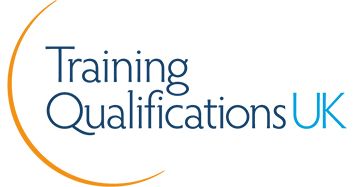Post Traumatic Stress Disorder (PTSD)
- SALE Savings End Midnight Wednesday 30th April
- SALE Savings End Midnight Wednesday 30th April
Post Traumatic Stress Disorder (PTSD)
Once referred to as ‘Shell Shock” in the first world war the limited understanding of this complex condition led to some soldiers branded as cowards and shot!
Our understanding has developed greatly and more since the Hillsborough Disaster, when the word trauma was used and we became aware of PTSD.
Post Traumatic Stress Disorder has been around, but never fully recognised or understood. We are now gaining an understanding of this important condition that seems to dominate those working in the areas it has high prevalence.
As we evolve in science we realise how complex mental health is. This course will develop your understanding and beyond. Whether you work in the field of mental health, studying a degree or just interested, you will learn about the complexities of PTSD.
Modules
Module: One
Aims: To understand the fundamentals of trauma.
Objectives:
Understand the terminology of PTSD
To develop and understanding of formative conditioning
Define perception
Module: Two
Aims: To understand the differing types of PTSD
Objectives:
Understand vicarious PTSD
To develop and understanding of denial
Define disassociate
Module: Three
Aims: To understand the effects of PTSD.
Objectives:
Understand three affected areas of functioning.
To develop and understanding of formative conditioning
Define man made and natural trauma with examples.
Module: Four
Aims: To understand the diagnostics of trauma.
Objectives:
Understand the basic steps of PTSD
To develop and understanding of diagnosis
Define restricted range of events
Module: Five
Aims: To understand the effects cause by traumatic events
Objectives:
Understand the brains alarm
To develop and understanding the role of the hippocampal system.
Define the amygdala
Module: Six
Aims: To understand the different types of PTSD
Objectives:
Understand the six types
To develop and understanding PDSD
Define sequential traumatisation
Understand the trauma trail.
Module: Seven
Aims: To understand the alternative conditions.
Objectives:
Understand the Perceptual Disorder
To develop and understanding of Acute Stress Disorder
Define Survivor Guilt
Understand compensation neurosis
Module: Eight
Aims: To understand the impact of bullying and PTSD.
Objectives:
Understand how bullying can develop into PTSD
To develop and understanding differing types of bullying
Define cyber bullying
Module: Nine
Aims: To understand how children are affected by PTSD
Objectives:
Understand how it affects children
To develop and understanding of the unique aspects to children
Understand what can help
Module: Ten
Aims: To understand some treatments for PTSD.
Objectives:
Understand the help available for PTSD
To develop and understanding of differing methods to treat PTSD
Entry Requirements
There is no experience or previous qualifications required for enrolment on this course. It is available to all students, of all academic backgrounds.
All course fees, inclusive of all payment plans including our Premium Credit Limited option, must be settled before certification can be ordered.
*You will have access to the course for 24 months.
On successful completion of your course you will receive the learndirect Certificate of Completion of Training in Post Traumatic Stress Disorder (PTSD).
Your course certificate will also state the number of CPD points/hours the course is eligible for.
View a sample of the certificate (opens in new window)
learndirect is one of the largest integrated providers of courses and qualifications, training, and employment services in the UK
- Each year around 6,000 businesses equip their staff for success with learndirect
- learndirect have helped more than 75,000 businesses equip their employees with the skills needed to improve productivity.
- Almost 700,000 maths and English test passes have been achieved with learndirect.
- 300,000 people fulfilled their career ambitions last year with learndirect.
- Over 250,000 apprentices have achieved with learndirect.
- SALE Savings End Midnight Wednesday 30th April
- SALE Savings End Midnight Wednesday 30th April
Post Traumatic Stress Disorder (PTSD)
Once referred to as ‘Shell Shock” in the first world war the limited understanding of this complex condition led to some soldiers branded as cowards and shot!
Our understanding has developed greatly and more since the Hillsborough Disaster, when the word trauma was used and we became aware of PTSD.
Post Traumatic Stress Disorder has been around, but never fully recognised or understood. We are now gaining an understanding of this important condition that seems to dominate those working in the areas it has high prevalence.
As we evolve in science we realise how complex mental health is. This course will develop your understanding and beyond. Whether you work in the field of mental health, studying a degree or just interested, you will learn about the complexities of PTSD.
Modules
Module: One
Aims: To understand the fundamentals of trauma.
Objectives:
Understand the terminology of PTSD
To develop and understanding of formative conditioning
Define perception
Module: Two
Aims: To understand the differing types of PTSD
Objectives:
Understand vicarious PTSD
To develop and understanding of denial
Define disassociate
Module: Three
Aims: To understand the effects of PTSD.
Objectives:
Understand three affected areas of functioning.
To develop and understanding of formative conditioning
Define man made and natural trauma with examples.
Module: Four
Aims: To understand the diagnostics of trauma.
Objectives:
Understand the basic steps of PTSD
To develop and understanding of diagnosis
Define restricted range of events
Module: Five
Aims: To understand the effects cause by traumatic events
Objectives:
Understand the brains alarm
To develop and understanding the role of the hippocampal system.
Define the amygdala
Module: Six
Aims: To understand the different types of PTSD
Objectives:
Understand the six types
To develop and understanding PDSD
Define sequential traumatisation
Understand the trauma trail.
Module: Seven
Aims: To understand the alternative conditions.
Objectives:
Understand the Perceptual Disorder
To develop and understanding of Acute Stress Disorder
Define Survivor Guilt
Understand compensation neurosis
Module: Eight
Aims: To understand the impact of bullying and PTSD.
Objectives:
Understand how bullying can develop into PTSD
To develop and understanding differing types of bullying
Define cyber bullying
Module: Nine
Aims: To understand how children are affected by PTSD
Objectives:
Understand how it affects children
To develop and understanding of the unique aspects to children
Understand what can help
Module: Ten
Aims: To understand some treatments for PTSD.
Objectives:
Understand the help available for PTSD
To develop and understanding of differing methods to treat PTSD
Entry Requirements
There is no experience or previous qualifications required for enrolment on this course. It is available to all students, of all academic backgrounds.
All course fees, inclusive of all payment plans including our Premium Credit Limited option, must be settled before certification can be ordered.
*You will have access to the course for 24 months.
Qualifications
On successful completion of your course you will receive the learndirect Certificate of Completion of Training in Post Traumatic Stress Disorder (PTSD).
Your course certificate will also state the number of CPD points/hours the course is eligible for.
View a sample of the certificate (opens in new window)
learndirect is one of the largest integrated providers of courses and qualifications, training, and employment services in the UK
- Each year around 6,000 businesses equip their staff for success with learndirect
- learndirect have helped more than 75,000 businesses equip their employees with the skills needed to improve productivity.
- Almost 700,000 maths and English test passes have been achieved with learndirect.
- 300,000 people fulfilled their career ambitions last year with learndirect.
- Over 250,000 apprentices have achieved with learndirect.
learning
learning hours





















 If you find this course cheaper anywhere
If you find this course cheaper anywhere

